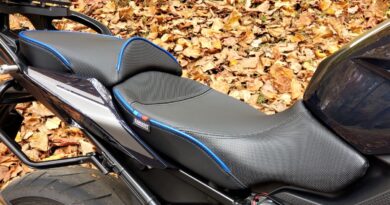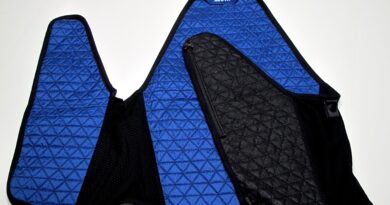Weird Science: Rukka Phase Change shirts
Did you want to be an astronaut when you were little? While your chances of pursuing that career now are probably less than stellar (!), you can still wear something developed by NASA for space mission crews. It’s a textile called Outlast (made by a company of the same name, founded in the US and now managed from Germany), and it utilizes something called “phase change” technology to regulate temperature over a wider range than is possible with conventional materials.
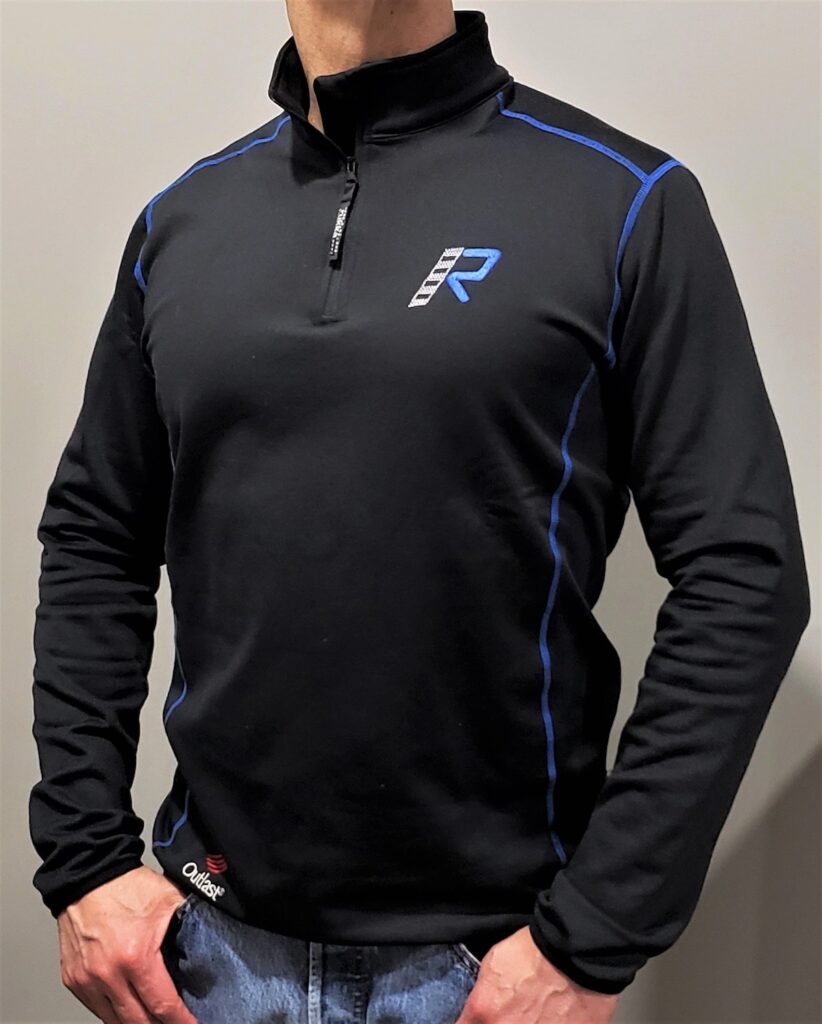 Recall from your eighth-grade science class that a change of phase refers to transitions between temperature-related states: water changes phase between solid and liquid at 0-degrees Celsius, and between liquid and gas at 100-degrees C. Part of the phase change process is the absorption or emission of energy as molecular bonds are formed or broken. Moving up the temperature scale, energy is required from the environment to break bonds. In the example of water, the crystalline structure of ice is disrupted by the application of heat, which energizes the water molecules such that they no longer “sit still” in a frozen state. Further heating excites them to the point they bounce apart from each other so vigorously they expand into their surroundings in gaseous form. At each of these points, heat energy is transferred from the nearby environment to the water molecules. Going down the temperature scale, heat energy travels in the opposite direction, leaving gaseous water molecules as they settle back into a liquid state, and then even more so as they reach the quiescently solid form of ice. We experience these phenomena in everyday life. For example, the evaporation of our sweat carries heat away from our bodies and we feel cooler. More relevant to the mechanism employed by Outlast, holding an ice cube against our hot forehead melts the ice and relieves our overheating. Again, energy is transferred from our body to the solid H2O, transforming it into its liquid phase.
Recall from your eighth-grade science class that a change of phase refers to transitions between temperature-related states: water changes phase between solid and liquid at 0-degrees Celsius, and between liquid and gas at 100-degrees C. Part of the phase change process is the absorption or emission of energy as molecular bonds are formed or broken. Moving up the temperature scale, energy is required from the environment to break bonds. In the example of water, the crystalline structure of ice is disrupted by the application of heat, which energizes the water molecules such that they no longer “sit still” in a frozen state. Further heating excites them to the point they bounce apart from each other so vigorously they expand into their surroundings in gaseous form. At each of these points, heat energy is transferred from the nearby environment to the water molecules. Going down the temperature scale, heat energy travels in the opposite direction, leaving gaseous water molecules as they settle back into a liquid state, and then even more so as they reach the quiescently solid form of ice. We experience these phenomena in everyday life. For example, the evaporation of our sweat carries heat away from our bodies and we feel cooler. More relevant to the mechanism employed by Outlast, holding an ice cube against our hot forehead melts the ice and relieves our overheating. Again, energy is transferred from our body to the solid H2O, transforming it into its liquid phase.
Outlast fabric doesn’t actually change back and forth between solid and liquid forms—that would make for a rather messy wardrobe malfunction! However, paraffin (the wax used in all sorts of things, from candles to cosmetics to jet fuel) micro-encapsulated within its fibers does change phase in response to surrounding temperatures. Outlast utilizes paraffin made from grapeseed oil, rather than the petroleum often used in other applications. While wearing an Outlast garment, body heat can be transferred to the paraffin, changing it from solid to liquid form. Think about the spike in body temperature that accompanies physical exertion as an energy emission and think of the paraffin as a battery that absorbs and stores that energy. Once the period of physical exertion ends, the body cools back down. Now the paraffin releases its stored energy, giving it back to the body while returning from liquid form to solid. Such temperature buffering helps the wearer remain comfortable through numerous cycles of exertion and rest, with a cooling effect as body temperature rises and a warming effect as body temperature falls. This reduces the amount of sweat produced (up to 48%, according to Outlast), as well as vulnerability to catching a chill after a temperature spike. Moto-travelers take note: Outlast clothing not only contributes to wearer comfort, but also requires less frequent washing, since it will be less soiled by fewer bodily secretions.
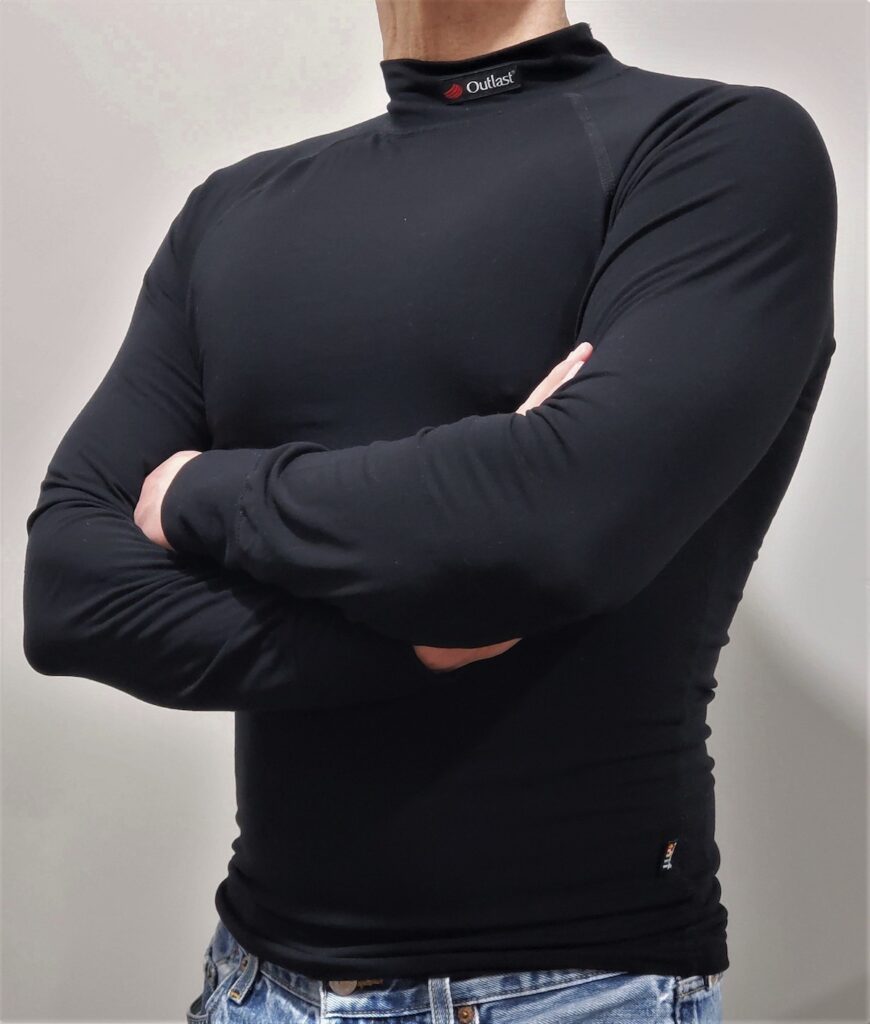 This is a quite different strategy than the use of “wicking” fabrics to transport sweat away from the skin. Outlast reduces the amount of perspiration to begin with, rather than just moving it away after it’s been excreted. The advantages are two-fold. First, less water is lost from the body, reducing the risk of dehydration. Secondly, there’s no water to get rid of after being wicked away from the skin; what good is wicking if the transported water can’t evaporate because it’s behind additional layers of clothing? Even though Gore-Tex and similar textiles allow the release of water vapor from within a garment to the outside environment, rather than leaving the wearer sealed in an ultra-humidified “baggie,” this process is neither fast nor complete. People can look at the compelling graphics showing moist vapor flowing out through a permeable membrane and imagine it feels like ventilation. It does not. While definitely better than conventional textiles lacking such provision, Gore-Tex and its cousins can still hold considerable amounts of moisture inside as those water molecules queue up for their turn to exit via microscopic pores. This is especially true when a lot of moisture has been introduced suddenly, as it is during a surge of exertion and the associated sweating.
This is a quite different strategy than the use of “wicking” fabrics to transport sweat away from the skin. Outlast reduces the amount of perspiration to begin with, rather than just moving it away after it’s been excreted. The advantages are two-fold. First, less water is lost from the body, reducing the risk of dehydration. Secondly, there’s no water to get rid of after being wicked away from the skin; what good is wicking if the transported water can’t evaporate because it’s behind additional layers of clothing? Even though Gore-Tex and similar textiles allow the release of water vapor from within a garment to the outside environment, rather than leaving the wearer sealed in an ultra-humidified “baggie,” this process is neither fast nor complete. People can look at the compelling graphics showing moist vapor flowing out through a permeable membrane and imagine it feels like ventilation. It does not. While definitely better than conventional textiles lacking such provision, Gore-Tex and its cousins can still hold considerable amounts of moisture inside as those water molecules queue up for their turn to exit via microscopic pores. This is especially true when a lot of moisture has been introduced suddenly, as it is during a surge of exertion and the associated sweating.
To the extent sweat is simply wicked away from the skin without further movement into the atmosphere via cooling evaporation, the wearer is still stuck inside a warm, swampy garment, which will feel wet against the skin wherever it’s pressed, like a damp sponge. Think about how your wicking shirt sticks to your skin underneath your back protector; it can’t shed the moisture/heat, so it remains wet and the skin under it stays hot. Wouldn’t it be better to just sweat less—or not at all—right from the start? Although non-riders frequently imagine motorcycling as a physically passive activity, like driving a car, it can actually be quite vigorous. Obviously, off-road riding makes serious demands on strength and endurance, and sport riding on the street can require considerable exertion while hustling a machine through the twisties. Also, it’s not just muscular activity that generates body heat and sweat—stress can do the same thing, and there are plenty of sources of that, even in mundane riding scenarios. The temperature buffer provided by Outlast doesn’t only work in one direction; fluctuations in ambient temps are mediated, too. A sudden drop or rise in the heat energy of the wearer’s surroundings will be regulated by the same principles in play on the garment’s interior, reducing the abruptness and extent of the impact of such changes on the body. Because the paraffin is permanently encapsulated, Outlast’s phase change properties don’t wear out or wash away over time.
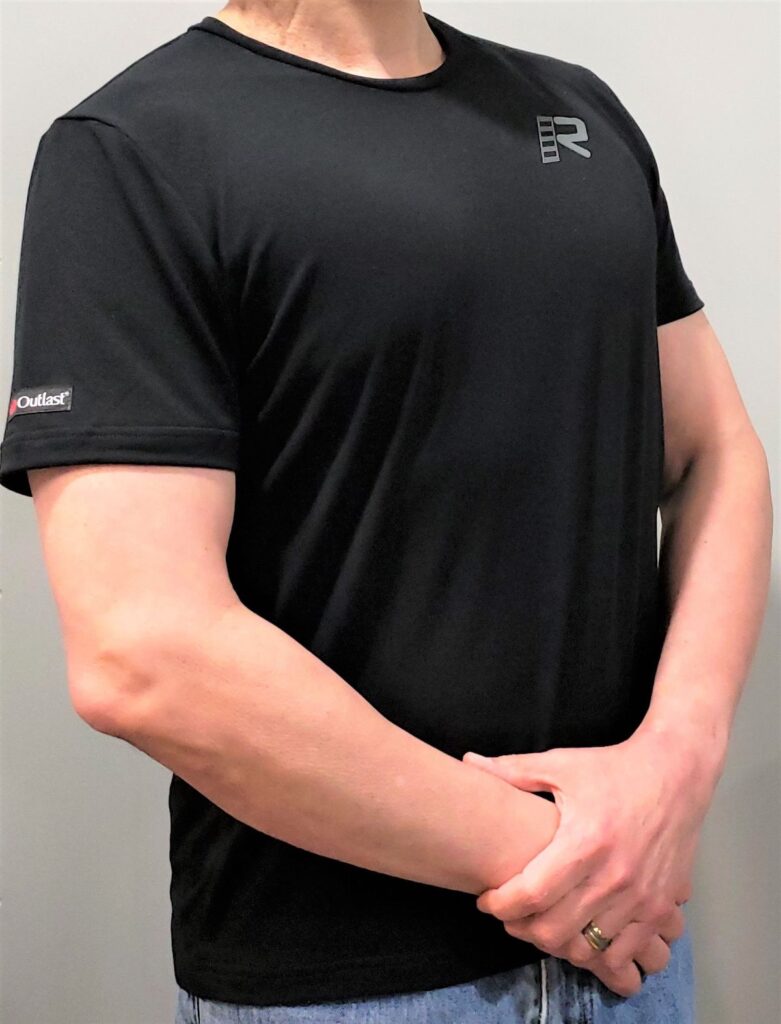 Finnish premium gear manufacturer Rukka saw the value of applying Outlast’s phase change properties to motorcycling garments (which, of course, can also be worn in all sorts of other endeavors wherein a person may generate or encounter significant temperature shifts). I bought three of their Outlast-equipped shirts: one lined inside with microfleece for colder conditions, and two without any added insulation, one long- and one short-sleeved. Keep in mind one of the worst contributors to hypothermia is sweat. A common mistake made by folks bundling up for frigid weather is dressing for warmth at rest, then saturating their clothes with sweat during physical exertion, and finally experiencing problematic heat loss because they remain wet after their activity level drops. I’m going to go out on a limb here, but I imagine people in Finland know a little something about the need to stay warm and dry.
Finnish premium gear manufacturer Rukka saw the value of applying Outlast’s phase change properties to motorcycling garments (which, of course, can also be worn in all sorts of other endeavors wherein a person may generate or encounter significant temperature shifts). I bought three of their Outlast-equipped shirts: one lined inside with microfleece for colder conditions, and two without any added insulation, one long- and one short-sleeved. Keep in mind one of the worst contributors to hypothermia is sweat. A common mistake made by folks bundling up for frigid weather is dressing for warmth at rest, then saturating their clothes with sweat during physical exertion, and finally experiencing problematic heat loss because they remain wet after their activity level drops. I’m going to go out on a limb here, but I imagine people in Finland know a little something about the need to stay warm and dry.
Simply examining the Outlast fabric reveals nothing out of the ordinary. It looks and feels like a conventional, stretchy, breathable, synthetic base layer, and lists the expected polyester and elastane components—along with the invisible addition of the semi-synthetic viscose rayon comprising Outlast. A quick note on sizing: these shirts fit very differently, despite all being the same size. The thicker fleecy version, with its quarter-zip neck, is close-fitting, but relaxed, and can be worn over a tee-shirt or by itself. The thinner, lighter, uninsulated versions are quite snug, though not at all restrictive, due to the ease with which they stretch; they’re clearly meant to be the layer closest to your skin. Nevertheless, those at the larger edge of a standard size may want to go up one notch. Both long-sleeved shirts feature high collars to extend their effectiveness up around the neck, where temperature differentials can have outsized effects because of how much blood flows close to the surface there.
Upon donning one of these shirts, something feels a bit strange almost immediately, although it’s difficult to put into words. You might not notice this unless you pay close attention, but it’s slightly cool against the skin. I assume this is the paraffin absorbing the initial wave of energy from bodily contact. When outside in cold temps, it never feels particularly warm, but rather its ongoing coolness is incongruous with external conditions—it seems to just stay a little cooler than your skin without becoming cold. In warmer settings and during physical exertion, it just continues to feel slightly cool next to the skin, which stays dry longer because body temp doesn’t climb as you’d expect. It’s kind of eerie, really. Although you can definitely exceed the fabric’s performance parameters and break a sweat, it’s also definitely more of a challenge to do so—the threshold is raised significantly. Likewise, these shirts are not an invincible barrier against extreme cold, but the outside temperature has to be lower—and stay lower—for the cold to reach your body. I estimate these shirts provide comfort in temps 5-8 degrees warmer and cooler than would a conventional synthetic fabric of equal thickness; that’s a total of 10-16 degrees of additional range, basically what you’d get from adding another layer.
Brief fluctuations that are readily sensed by exposed skin or even conventionally clad extremities, either never register inside the shirts or arrive in a delayed and muted manner. Of course, the additional insulation in the microfleece version shifts these thresholds down the thermometer, but the effects are the same for all three shirts. Also, don’t expect the fabric to stiffen up when cold. Somehow, the paraffin’s relative solidity/liquidity doesn’t translate into any perceptible difference in texture. Flatlock seams ensure all points of bodily contact feel silky smooth, and the material glides easily in and out of jacket sleeves.
Compared to other wicking synthetics, Rukka’s Outlast shirts offer genuine advantages in regulating body temperature, especially when a) you’re dealing with heat and perspiration generated by bursts of physical exertion in cool or cold conditions (space travel involves more threat of hypothermia than hyperthermia), and/or b) you’re unable to quickly and efficiently evacuate heat and moisture from within layers of clothing (I’m guessing space suits don’t “breathe”). These garments also guard against dehydration by minimizing fluid loss (sweating). The wearer remains in a comfortably moderated temperature range throughout broad changes in ambient and bodily generated heat levels. Whatever sweat ends up being wicked away from the body by the Rukka shirts still needs a means of evaporative escape, so summer riding will require vented gear, albeit starting at a higher temp.
These remarkable qualities don’t come cheap. MSRP on the three shirts evaluated here are $119 (with microfleece), $69 (without), and $59 (tee). Pants are available for $69 and a one-piece full bodysuit is $99, both without microfleece. There’s also a snug-fit, full-zip, fleece jacket option for $149 and fleece pants for $99. Rukka’s Outlast lineup is available in any color you want, as long as its black, and sizing ranges from XS to 3XL. Despite its exotic technology, no special laundering is required. Rukka warranties their gear for two years against defects in materials or workmanship. See their website for a list of select retailers in the US.


